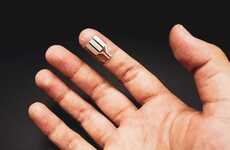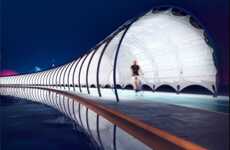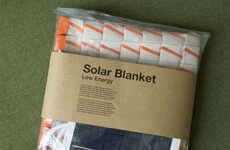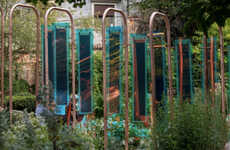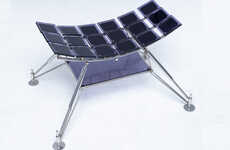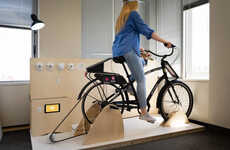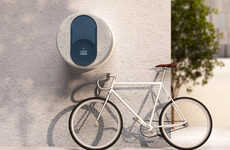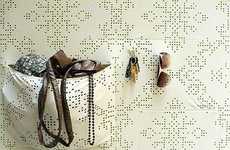
Designpreneur Fuels Eco-Energy Goals WIth POWERleap
Katie Cordrey — January 7, 2009 — Eco
References: powerleap.net & changents
Elizabeth Redmond is a 23-year-old inventor and entrepreneur whose POWERleap flooring may just change the world. The flooring that Redmond invented converts human energy into ready to use on-site energy. She envisions its use in urban settings: city sidewalks, dance clubs, airport terminals, fitness clubs, campuses, office lobbies; in short, anywhere that lots of people walk.
The flooring is an outgrowth of a 4th year art and design undergraduate thesis and is comprised of tiles that snap together to create a walking surface. The flooring relies upon piezoelectricity generated by wasted human energy. To date, Redmond has completed three prototype flooring installations. She is refining the technology to make it easy to install and use.
Redmond has her detractors. In reading over objections to the concept, I conclude that they fall primarily in the category of, “If it’s not a silver bullet, don’t bother.” That pessimistic thinking is a naysayer’s paradise and offers very little that is useful to solutions-oriented discussions.
No one claims that this flooring will solve all urban energy woes, but it just might help. Each person doing a little to help address our planetary problems will make a difference. The energy from one footfall is worth more to me than all the downbeat energy coming from those nattering nabobs of negativity.
Art and design fostered this exciting invention. Most artists are also technicians who understand and manipulate materials or technology to achieve a purpose. Art and science are linked in many ways. Elizabeth Redmond illustrates this point many times over.
I say, KUDOS! I’m cheering her on through the Changents site.
The flooring is an outgrowth of a 4th year art and design undergraduate thesis and is comprised of tiles that snap together to create a walking surface. The flooring relies upon piezoelectricity generated by wasted human energy. To date, Redmond has completed three prototype flooring installations. She is refining the technology to make it easy to install and use.
Redmond has her detractors. In reading over objections to the concept, I conclude that they fall primarily in the category of, “If it’s not a silver bullet, don’t bother.” That pessimistic thinking is a naysayer’s paradise and offers very little that is useful to solutions-oriented discussions.
No one claims that this flooring will solve all urban energy woes, but it just might help. Each person doing a little to help address our planetary problems will make a difference. The energy from one footfall is worth more to me than all the downbeat energy coming from those nattering nabobs of negativity.
Art and design fostered this exciting invention. Most artists are also technicians who understand and manipulate materials or technology to achieve a purpose. Art and science are linked in many ways. Elizabeth Redmond illustrates this point many times over.
I say, KUDOS! I’m cheering her on through the Changents site.
Trend Themes
1. Piezoelectricity - Exploring ways to harness piezoelectricity generated by wasted human energy opens up opportunities for disruptive innovations in energy generation.
2. Urban Energy Solutions - Developing technology like energy-generating flooring for urban settings presents disruptive innovation opportunities in addressing energy woes and sustainability in cities.
3. Art-science Intersection - The intersection between art and science, as demonstrated by Elizabeth Redmond's invention, showcases the potential for disruptive innovation when creativity and technology meet.
Industry Implications
1. Renewable Energy - The renewable energy industry can explore integrating piezoelectric technology to tap into wasted human energy as a means of generating electricity.
2. Construction - The construction industry can adopt energy-generating flooring in urban infrastructure projects to promote sustainable energy solutions and reduce the reliance on traditional power sources.
3. Art and Design - The art and design industry can foster innovative collaborations with science and technology to create sustainable solutions, such as energy-generating products, that address real-world challenges.
4.4
Score
Popularity
Activity
Freshness

